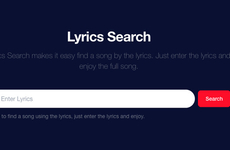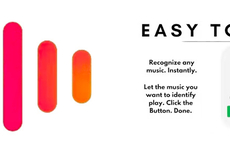
Google's Hum Feature Helps You Locate Songs with a Hum or Whistle
Ellen Smith — October 16, 2020 — Tech
References: blog.google & hypebae
Google's hum feature understands that sometimes consumers know the melody but not the lyrics, prompting a song search engine that can locate a tune with a hum or a whistle.
To test out the new feature, users simply have to have the latest version of Google. Once updated, they can tap the mic icon and say "Hey Google, what's this song?". Users will then be able to hum into the mic while Google's machine learning algorithm works to transform “audio into a number-based sequence representing the song’s melody.” This helps the technology locate potential song matches that are matched based on a variety of factors.
Google's Hum to Search function is available in 20 languages.
Image Credit: Google
To test out the new feature, users simply have to have the latest version of Google. Once updated, they can tap the mic icon and say "Hey Google, what's this song?". Users will then be able to hum into the mic while Google's machine learning algorithm works to transform “audio into a number-based sequence representing the song’s melody.” This helps the technology locate potential song matches that are matched based on a variety of factors.
Google's Hum to Search function is available in 20 languages.
Image Credit: Google
Trend Themes
1. Melody-based Song Search - The trend of melody-based song search engines allows consumers to locate songs simply by humming or whistling, disrupting traditional lyric-based search methods.
2. Machine Learning Algorithm - The trend of using machine learning algorithms to transform audio into number-based sequences enables more accurate song matching, opening doors for innovative music search platforms.
3. Multilingual Song Identification - The trend of multilingual song identification features in search engines improves accessibility and user experience for diverse language speakers, offering disruptive innovation opportunities in the global music industry.
Industry Implications
1. Music Streaming - The music streaming industry can leverage melody-based song search engines to enhance user engagement and retention, revolutionizing the way people discover and enjoy music.
2. Voice Assistant Technology - The voice assistant technology industry can incorporate melody-based song search features, using machine learning algorithms to enhance the functionality and capabilities of voice-activated search devices.
3. Language Processing - The language processing industry can explore opportunities in developing advanced multilingual song identification systems, expanding the capabilities of search engines to serve diverse language speakers in the music domain.
3.1
Score
Popularity
Activity
Freshness
























